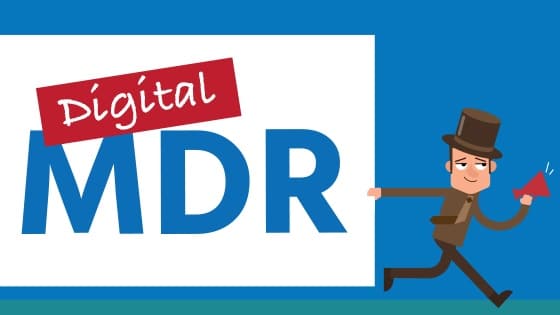


The “wild west” of cybersecurity could use another good guy, and Managed Detection and Response services (MDRs) promise to deliver an effective way to manage, detect and respond to complex attacks that often slip through standard security controls.
Exponential growth in the number of targeted cyberattacks and advanced persistent threats necessitated the move towards early threat detection and incident response approach to cybersecurity, which is based on the premise that a breach is inevitable. While rigid perimeter defenses and signature-based blocking are capable of fending off most attacks, we’ve been witnessing that even the best prevention technology is no longer capable of stopping every single threat in its tracks.
Difference between MDR and MSSP
Threat detection and incident response requires cutting-edge technology combined with highly specialized human expertise. The shortcoming of in-house security operations centers (SOCs) is that companies often lack the internal resources – personnel, know-how and technology– to protect their critical assets. In this case, companies can benefit from a managed service provider, such as MSSP or an MDR, who offer dedicated expert staff and continuous security monitoring capabilities. Not to mention, the cost of a managed service is considerably less than the expense of maintaining and constantly updating a similar solution in-house.
MSSPs focus on prevention, and offer a wide range of managed services from integration of firewalls to providing managed SOCs. MSSPs are spread thin with the number of services they offer, are often incapable of dealing with full blown targeted attacks and are not positioned to provide advanced incident response services.
MDRs approach cybersecurity differently from traditional managed security service providers (MSSPs). MDRs are fully-managed service providers that specialize in detecting attacks that have successfully breached the perimeter, as well as devising and implementing a proper response in case of a breach. MDRs relieve clients of the burden of having to determine which method or device they should use for security monitoring and response capability. They do this by focusing on threat detection with 24/7 monitoring and alerting, remote incident investigation and instant response- all as a part of a fully rounded end-to-end service.
While prevention remains an important part of a well-rounded cybersecurity strategy, it is no longer feasible to rely on the prevention layer alone when facing new types of threats. MDRs compliment prevention capabilities, with MSSPs filtering out most known and commoditized threats, while MDRs focus on finding those that slipped past your defences and are already lurking in your network, as well as on business-specific damage control.
MDRs correlate events across many entry-points and detect new and unknown threats that log-dependent SIEMs fail to flag. With an MDR, a company no longer has to implement a security technology and simply hope for the best. Businesses now have their own personalized, outsourced cybersecurity team with top-notch expertise in detection and response.
Businesses That Rely on Digital Channels Need Digital MDRs
Across industries and verticals, companies are increasingly abandoning traditional brick-and-mortar customer facing operations and moving to digital channels. For example, we see a push towards primarily digital business model in financial and retail sectors. Atom Bank, Britain’s first smartphone-based lender, revels in its digital-only status as it aims to take on paper-bound financial institutions.
Across the board, virtually every bank and retail business is increasing the scope of its digital operations. The U.S. Census Bureau’s monthly retail sales report shows transactions at non-store retailers in November 2016 were up a whopping 11.9% over the year, while, at the same time, department store sales fell by 6.4%.
As businesses increasingly venture into the digital realm, those who fail to persistently and comprehensively manage risk across their digital channels remain susceptible to a wide variety of cyberthreats. Most organizations don’t have the capacity or knowhow to persistently monitor risk across all these digital channels.
Digital MDRs address blind spots in your defence posture
Digital MDRs are focused on protecting businesses from cyber threats by comprehensively and continuously monitoring risk across digital channels, and are laser focused on detecting digital risk blind spots organizations face across social, mobile and web. Without the aid of a digital MDR , companies will struggle to mitigate risks for the following reasons:
Digital MDRs look beyond the perimeter
Digital MDRs cover all those blind spots because their sophisticated digital risk monitoring tools are not only guarding traditional internet gateways, but are also facing inward to detect threats that usually go unseen by the perimeter security technologies used by MSSPs. Firewalls, secure web gateways and antivirus solutions are no longer capable of defending the many new types of sophisticated cyber attacks that can infiltrate a network.
Digital MDRs offer MDR services geared towards business that are focused on online and digital. They combine technology and expertise to continuously monitor a company’s known digital assets to ensure that the relevant risks and threats are discovered quickly. By continuously scanning digital environment for threats, digital MDRs look beyond the perimeter to provide constant vigilance of cyber activities in order to eliminate potential threats before they become crises. To learn more about Digital MDRs, sign up to our blog.
©1994–2025 Check Point Software Technologies Ltd. All rights reserved.
Copyright | Privacy Policy | Cookie Settings | Get the Latest News
Fill in your business email to start


